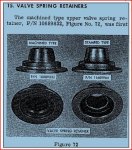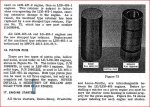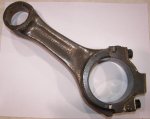- 3,024
- 230
- 63
- Location
- eldersburg maryland
you are trying to compare gas engines to diesels. true that many formulas will work, but the rods are MUCH heavier and the moment of mass as they swing must be pretty high. now let me say a few things that i think many overlook because they want to go fast or they have no experience or they have not read the manual.
this engine was used in many white farm tractors where the max rpm (high idle) was set at 2200 rpm. this should tell you something.
the manual says that you can use max rpm only for breif moments when you need max power. (not for driving down the highway.)
i have seen many of these engines with windows in the block and they all have been broken rod bolts. never have i seen a broken rod.
i like my engine and respect its rpm limitation. to that end i have a suggestion. adjust your high idle setting to 2550 rpm in neutral. simple to do, just remove the cover, turn the screw a couple of turns and then slowly put the pedal to the floor and see how high it goes. of course have enough sense to not go over 2600 if it still wants to, just turn screw some more.
tom
this engine was used in many white farm tractors where the max rpm (high idle) was set at 2200 rpm. this should tell you something.
the manual says that you can use max rpm only for breif moments when you need max power. (not for driving down the highway.)
i have seen many of these engines with windows in the block and they all have been broken rod bolts. never have i seen a broken rod.
i like my engine and respect its rpm limitation. to that end i have a suggestion. adjust your high idle setting to 2550 rpm in neutral. simple to do, just remove the cover, turn the screw a couple of turns and then slowly put the pedal to the floor and see how high it goes. of course have enough sense to not go over 2600 if it still wants to, just turn screw some more.
tom






